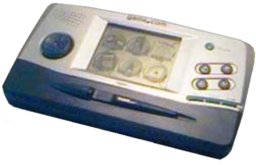Please note that Play:Right is a Danish site and while usable without,
it is only partially translated to English.
Blocks marked with yellow backgrounds are systematically translated
by Bing Translate.
it is only partially translated to English.
Blocks marked with yellow backgrounds are systematically translated
by Bing Translate.
Game.Com |
|
|

Most popular games
Batman & Robin
Centipede
Duke Nukem 3D
Fighters Megamix
Frogger
Henry
Indy 500 (1995)
Jeopardy!
Lights Out
Lost World, The: Jurassic Park (Tiger)
Monopoly
Mortal Kombat Trilogy
Quiz Whiz Trivia
Resident Evil 2
Scrabble
Sonic Jam
Tiger Casino
Tiger Web Link
Wheel Of Fortune
Wheel Of Fortune 2
Williams Arcade Classic
Centipede
Duke Nukem 3D
Fighters Megamix
Frogger
Henry
Indy 500 (1995)
Jeopardy!
Lights Out
Lost World, The: Jurassic Park (Tiger)
Monopoly
Mortal Kombat Trilogy
Quiz Whiz Trivia
Resident Evil 2
Scrabble
Sonic Jam
Tiger Casino
Tiger Web Link
Wheel Of Fortune
Wheel Of Fortune 2
Williams Arcade Classic
| # | Title | Developer | Publisher | Release |
||
|---|---|---|---|---|---|---|
| 1. |
|
- | - | |||
| 2. |
|
Tiger | Tiger | 1997 |


 copyright Play:Right 2002-2024
copyright Play:Right 2002-2024